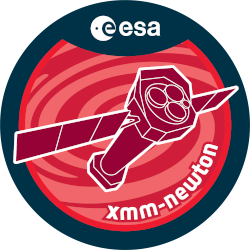

| Proposal ID | 050607 |
| Title | Measuring the evaporation of close-in extra-solar planets |
| Download Data Associated to the proposal | https://nxsa.esac.esa.int/nxsa-sl/servlet/data-action-aio?obsno=0506070201 |
| DOI | https://doi.org/10.5270/esa-2su90p5 |
| Principal Investigator, PI | Dr Peter Wheatley |
| Abstract | The discovery with HST of evaporation of the transiting exoplanet HD209458b hasraised the possibility that the evolution of close-in planets is dominated bymass loss. To date, however, this remains the only detection of evaporationbecause STIS was lost shortly after making this discovery. Here we show thatXMM-Newton transit spectroscopy is also sensitive to absorption by materialevaporating from close-in extra-solar planets. Indeed, X-ray continuumabsorption has the potential to measure mass loss rates, whereas HST could onlyplace a lower limit. We propose an XMM-Newton transit observation of the nearestand brightest transiting planet, HD189733b. Simultaneous measurement of X-rayirradiation and evaporation rates will provide the first direct test of planetary evaporation models. |
| Publications |
|
| Instrument | EMOS1, EMOS2, EPN, OM, RGS1, RGS2 |
| Temporal Coverage | 2007-04-17T14:06:31Z/2007-04-18T05:20:49Z |
| Version | 17.56_20190403_1200 |
| Mission Description | The European Space Agencys (ESA) X-ray Multi-Mirror Mission (XMM-Newton) was launched by an Ariane 504 on December 10th 1999. XMM-Newton is ESAs second cornerstone of the Horizon 2000 Science Programme. It carries 3 high throughput X-ray telescopes with an unprecedented effective area, and an optical monitor, the first flown on a X-ray observatory. The large collecting area and ability to make long uninterrupted exposures provide highly sensitive observations. Since Earths atmosphere blocks out all X-rays, only a telescope in space can detect and study celestial X-ray sources. The XMM-Newton mission is helping scientists to solve a number of cosmic mysteries, ranging from the enigmatic black holes to the origins of the Universe itself. Observing time on XMM-Newton is being made available to the scientific community, applying for observational periods on a competitive basis. |
| Creator Contact | https://www.cosmos.esa.int/web/xmm-newton/xmm-newton-helpdesk |
| Date Published | 2008-05-01T00:00:00Z |
| Last Update | 2025-08-04 |
| Keywords | "XMM", "material evaporating", "brightest transiting planet", "XMM-Newton", "planetary evaporation models", "xray continuum absorption", "xmm newton transit", "xray irradiation", "lower limit", "lost shortly", "HD209458", "mass loss rates", "evaporation rates", "extra solar planets", "HST", "mass loss", "transiting exoplanet hd209458b" |
| Publisher And Registrant | European Space Agency |
| Credit Guidelines | European Space Agency, Dr Peter Wheatley, 2008, 'Measuring the evaporation of close-in extra-solar planets', 17.56_20190403_1200, European Space Agency, https://doi.org/10.5270/esa-2su90p5 |